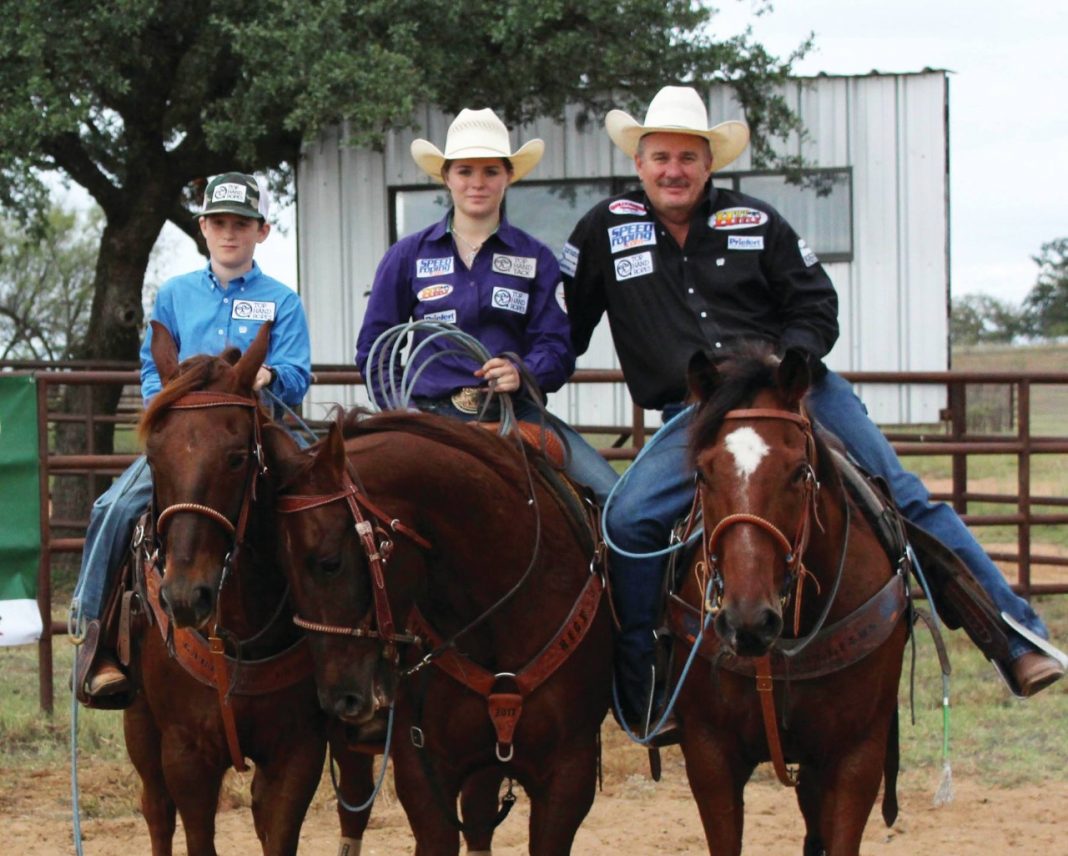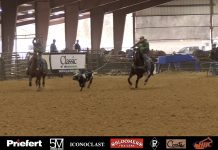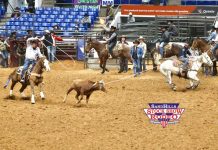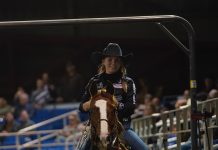Teaching my son to heel
As a kid, for as long as I can remember, when I came home from school my dad had two or three heel horses saddled and once I got home, all I did was rope. We had donkeys, goats, and pretty much anything that moved was roped… except my dad’s cow dogs. He used to catch cows for people when they got out. Once they had a bull bayed up and when he picked his rope up his dogs scattered like quail. He came home and lined up all the boys at the barn and we got a good scolding. From that time on the dogs were off limits, otherwise if it moved, we tried to rope it.
For the first eleven years of my son’s life, he really didn’t care about roping. He would rope with me for 10 or 15 minutes at a time and then be done. He had one roping, the Wildfire Sponsorship roping, that he loved roping in. Otherwise he didn’t care. It was two years ago in December that he won some money in the dummy jackpots in Las Vegas. Right then the switch flipped and the bug bit him. He walked around Vegas with a rope tied to his belt roping my legs and everything else. It’s been a dream come true and a nightmare at the same time. He always wants one more pen… not just one more steer.
Now my struggle is teaching him to heel. I have been able to eliminate some little steps that I went through when I was learning. First, I’m a big fan of math and have always maintained it’s hard to rope the dummy on the ground and transition that to roping on a horse. On the ground there’s no bridle reins or horse, therefore there’s no reactions or consequences for what your hands or feet are doing.
Most professional ropers have spent hours roping the dummy on the ground, but we have to calculate the difference in angles once horseback. One of the biggest differences in heeling is your horse’s head and the position of your body. The angles of how you swing and deliver are so different. I’m a believer in realistic practice where it’s as close to competition as possible. Being able to make repetitive throws from the same angle as when roping from a horse is very valuable for young people and helps them learn correctly without creating bad habits. To spend hours practicing, it needs to be beneficial once horseback.
For the thirty days before the USTRC Finals, I’ve been completely booked with private lessons. I’ve had a lot of heelers come to our house to rope. We’ve been working on the entry to the corner, one of the major struggles in heeling. This has made a world of difference in Gabe’s roping in the last month. If you can get in the correct position the steer is easier to rope. But if your horse’s head is in your way and blocking your view, it can cause a chain reaction and series of problems. First, you lean trying to see. When you lean, your horse stops and you have to reach to try and catch. That makes it difficult to dally. And it was all caused by the entry to the corner.
Heeling is extremely difficult if the header doesn’t set the corner up and handle the steer. When the header gives the steer his head and doesn’t handle him, it’s a nightmare for a heeler. Often when people call and book lessons, they’re roping well and not missing steers, but their heelers aren’t catching. Recently I’ve some #6 and #5+ headers come for help with these problems.
In my clinics, we normally run about eight steers and then go in and watch the video. Gabe usually does all the heeling and the very first day he couldn’t catch 2 out of 10 for my clients. After watching the video, we work on them getting the steer’s head, keeping their horse at the correct angle, and pulling the steer. Now, Gabe can catch 8 out of 10. Same steers, same header, same horses.
It’s completely obvious to headers when they see that big of a difference. The major causes are hitting the corner too hard, going down the arena too much, coming back up the arena too much, going too fast across the arena, slowing down in the corner too much, changing speeds with the steer. Then it’s figuring out the cause. Is it the bridle, is the header using his legs wrong, etc. That’s why I love filming and then watching it.
Every day Gabe does 25 drills on the Speed Trainer where he works on his delivery, pulling his slack and his dally. He still makes mistakes but without this tool he would not be as far along as he is. At the USTRC Finals he came back 10th high call in the #12 Shoot Out. Primarily we work at riding our horse and taking a high percentage shot. We also work on going fast in case we have to make up for roping a leg, etc. This is what he did here and it paid off. He and his partner came back and won 4th and I’m very proud and happy for him.
Win a Speed Trainer of your own! Check out our the Speed Trainer giveaway contest in our ad this month!






